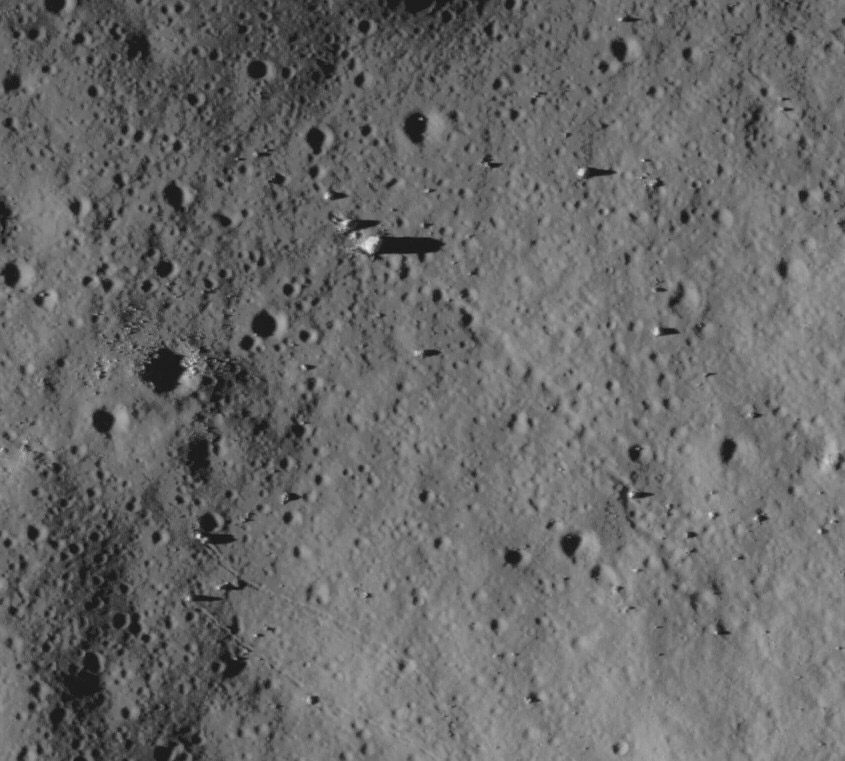August 27, 2009
Follow the Bouncing Boulder

LROC high resolution image provided by Marc Patry, France
Very high resolution discloses phenomena that are invisible with merely excellent resolution. One fun and physically important example is boulder trails. Marc has captured this image from 4 minutes 5 seconds into a 140 Mb video file of a LRO image of Tsiolkovskiy Crater. I don't know the image width (and don't have time to research it) but guess that the boulders making the narrow trails are only a few meters wide. The big bright boulder with a trail of bouce imprints is probably 10s of meters wide - think of your house or office building tumbling downslope. It is assumed that moonquakes or impacts dislodge boulders from a precarious equilibrium, setting them bouncing, rather than sliding downhill. Before Apollo, boulder trails were studied intently using Lunar Orbiter very high resolution (as good as 1 m) images to deduce the physical characteristics of lunar soils and surfaces. James Fincannon has added a brief summary of boulder track studies and a list of dozens of tracks to the Moon Wiki. The widescale super high resolution coverage to come from LRO will capture many hundreds of additional tracks. Intriguingly, it will also reimage some tracks seen in the 1960s Lunar Orbiter images. It will be fascinating to look for additional movement of those old boulders and also to see if new tracks have been made since the 60s. New ones will be discovered and their number may be used to as a proxie for seismometers to estimate the current rate of occurence of moonquakes.
Chuck Wood
Yesterday's LPOD: Abusing Rocks
Tomorrow's LPOD: A Tortured Terrain
COMMENTS?
Register, Log in, and join in the comments.



